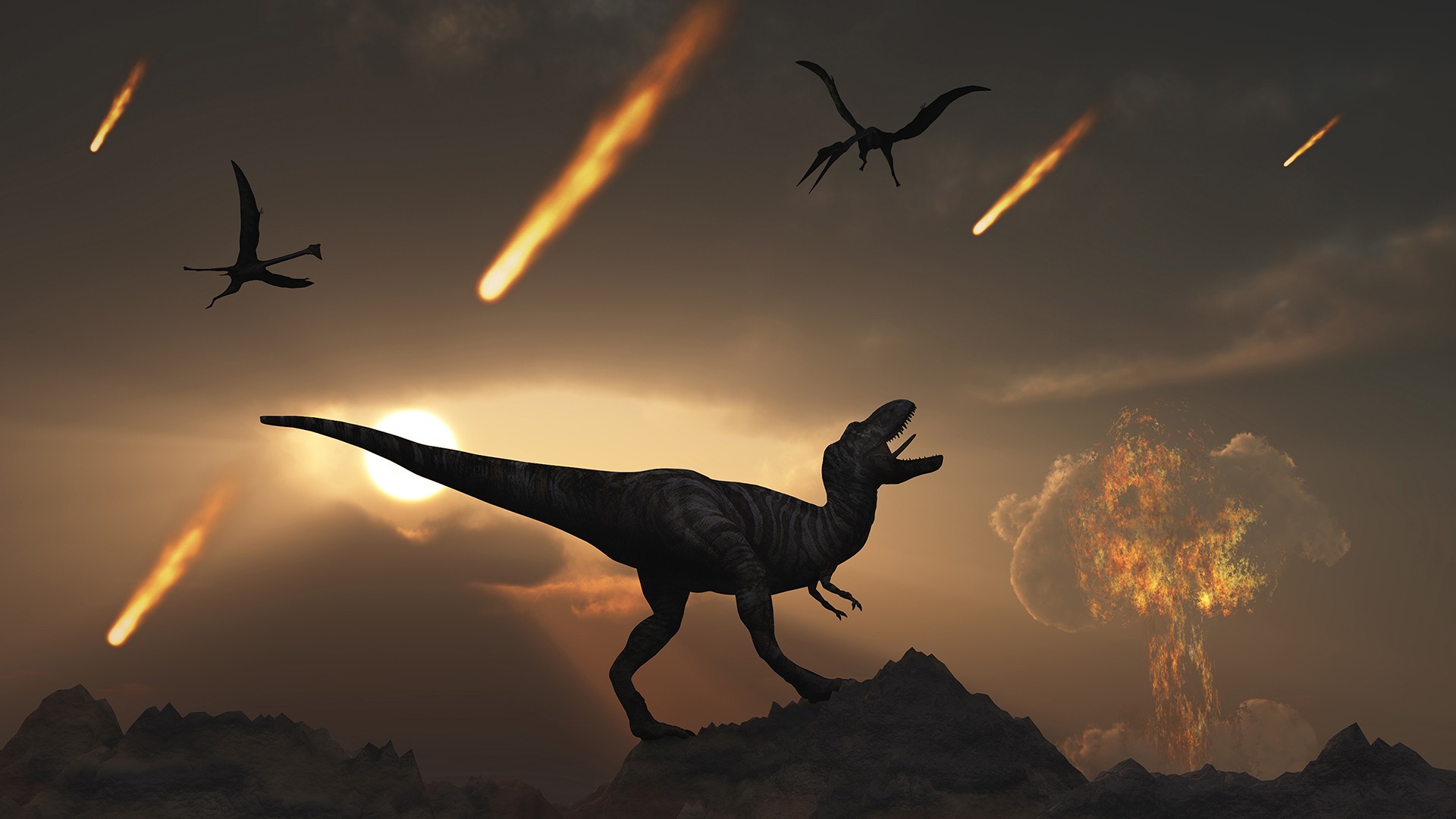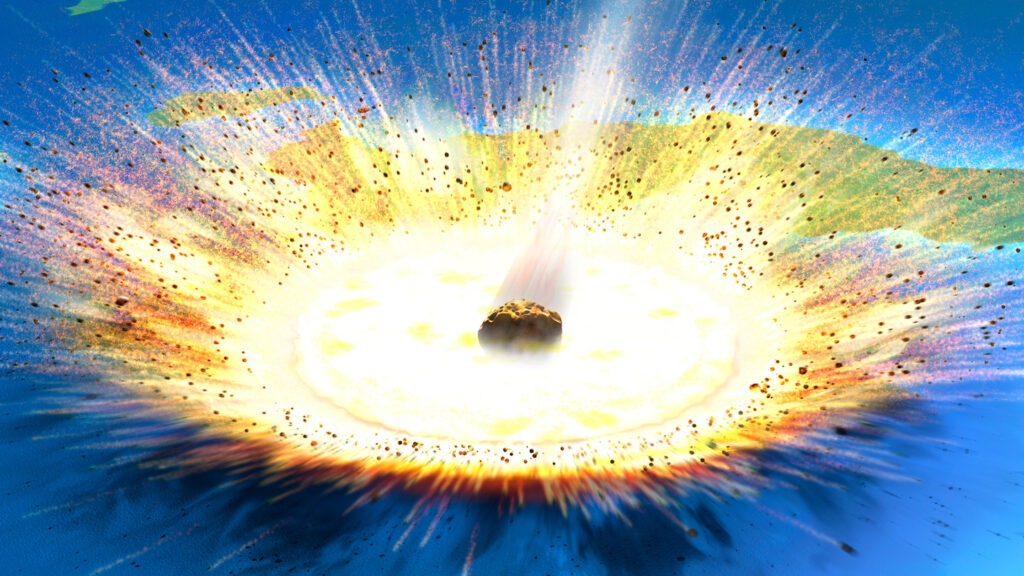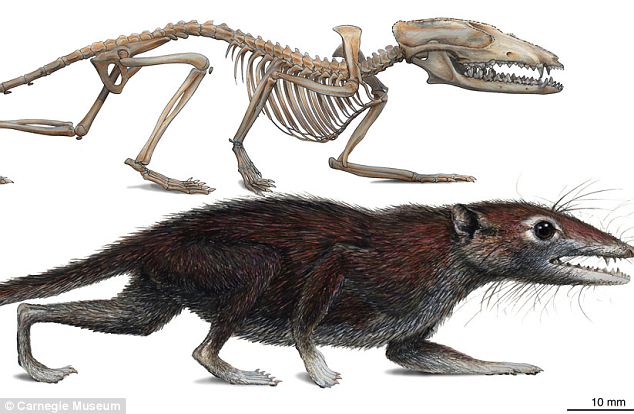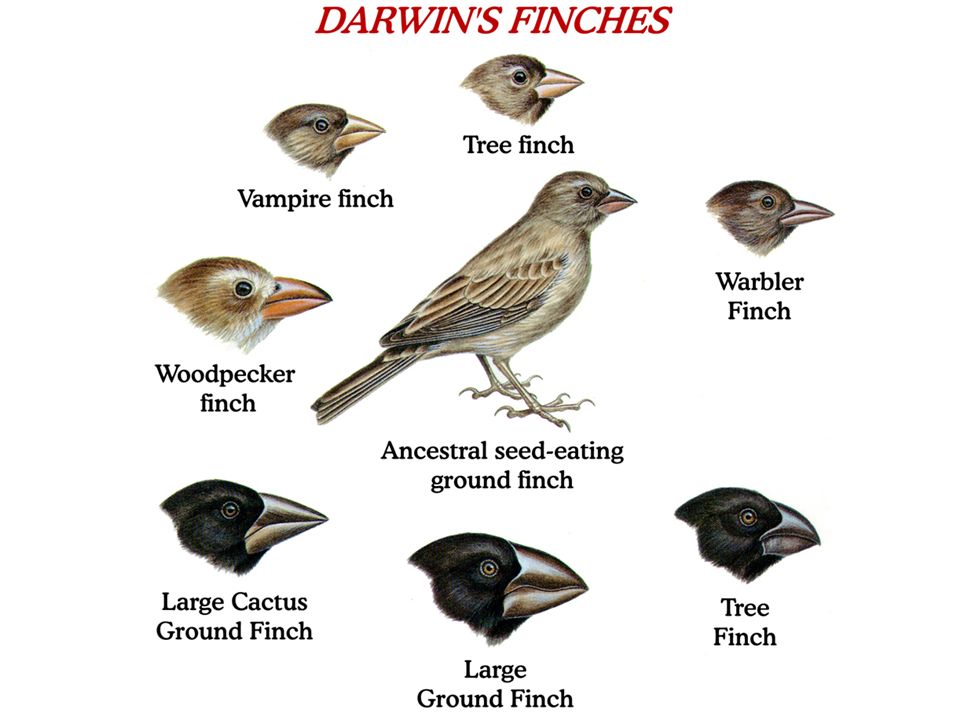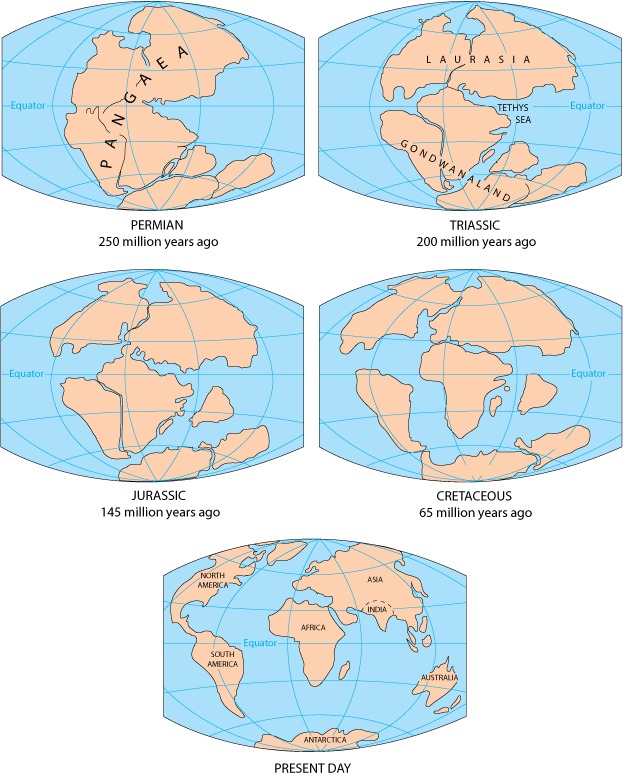Dinosaurs endured the worst day of their lives 66 million years ago. A 12 kilometer-wide (7.5 miles) asteroid collided with Earth near the Yucatán peninsula in Mexico. The hit generated an explosion several billion times more powerful than the Hiroshima atomic bomb.
On the American continent, the majority of animals are slaughtered right away. Tsunamis occur around the planet as a result of the impact. Hundreds of thousands of dust are thrown into the atmosphere, completely darkening the Earth. Many plant and animal species perished due to this “nuclear winter“. The dinosaurs were the most famous of this latter group.
Days after the asteroid
Following the asteroid’s impact roughly 66 million years ago, many kinds of life were wiped out. However, the impact resulted in environmental changes, resulting in catastrophic extinction over time.
The dense clouds of ash and particles that blasted into the atmosphere and swept across the Earth, engulfing portions of the planet in the darkness that may have lasted up to two years, could have been one such extinction trigger.
Photosynthesis would have failed during that time, resulting in ecological collapse. According to research published Dec. 16 at the annual conference of the American Geophysical Union (AGU) in New Orleans and online, this decline could have continued for decades after sunlight returned.
The crash’s clouds of pulverized rock and sulfuric acid would have darkened the sky, lowered global temperatures, caused acid rain, and fueled wildfires. Scientists first proposed the post-asteroid “nuclear winter scenario” in the 1980s, according to Peter Roopnarine, a curator of geology in the Department of Invertebrate Zoology and Geology at the California Academy of Sciences and a presenter at the AGU meeting, which suggested that darkness played a role in mass extinctions following the Cretaceous impact.
a. Long-Term Darkness post-asteroid
Long-term darkness by re-creating biotic ecosystems existed at the time of the asteroid’s impact. They employed 300 species from the Hell Creek Formation, a fossil-rich shale and sandstone formation that spans sections of Montana, North Dakota, South Dakota, and Wyoming and dates from the Late Cretaceous.
According to the presentation, they then built simulations that exposed their populations to periods of darkness ranging from 100 to 700 days to examine which intervals would result in the rate of vertebrate extinction documented in the fossil record — roughly 73%. According to Roopnarine, the advent of post-impact darkness would have been quick, peaking in a few weeks.
According to the study, ecosystems could recover after a period of darkness lasting up to 150 days. However, that same community reached a critical tipping point after 200 days, when “certain species became extinct, and dominance patterns shifted,” scientists said. Extinction rates increased considerably in models when darkness lasted the longest. According to the simulations, extinction levels reached 65 percent to 81 percent over a darkness interval of 650 to 700 days, implying that the Hell Creek communities experienced nearly two years of darkness.
The researchers discovered that once an ecosystem hit that tipping point, it could eventually return with a new species distribution, but that process would have taken decades. The scientists stated at the conference that extended stimulations of Hell Creek settlements that stayed dark for 700 days showed that it takes 40 years for conditions in the ecosystem to recover when the darkness lifted.
b. Mammalian Diversity Expansion
Mammals had a low-profile life for 150 million years before the dinosaurs were extinct 65 million years ago, and they only came into their own when the dinosaurs died out. Every year, new fossil discoveries add to our understanding of the past. Researchers stated in 2001 that a fossil discovered in 1985 in China is the remnants of a tiny, fuzzy animal that lived 195 million years ago in the Early Jurassic period and was a relative of today’s living mammals.
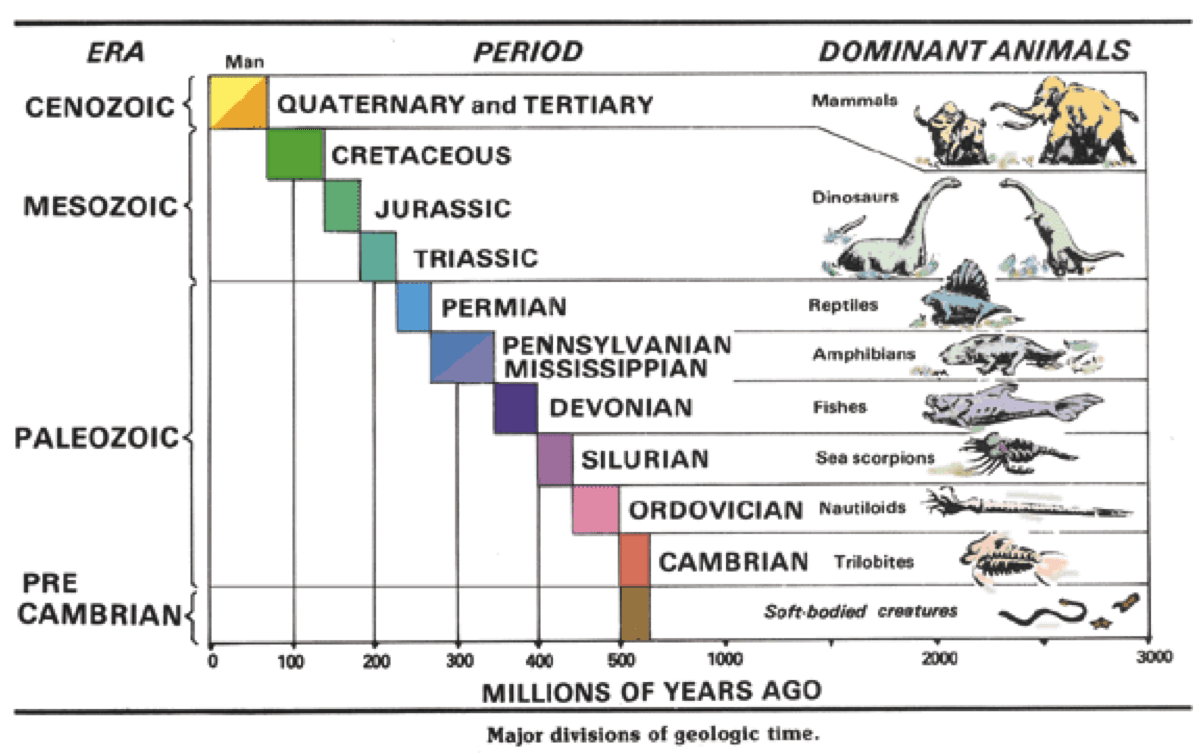
Early real mammals were mostly tiny insect-eating species specialized to nighttime activities, descended from more archaic cousins. They ranged in size from the size of a bumblebee to that of a squirrel, and they stayed out of the way of the predatory dinosaurs. They developed limbs that were positioned beneath the body, a bigger brain, more complicated physiology, milk-producing glands, and a diversified array of teeth (incisors, canines, premolars, and molars) that would later distinguish mammals.
Monotremes (platypus and spiny anteater), which lay eggs externally, marsupials (kangaroos, opossums), which carry their young in a pouch, and placental mammals (humans, cows, horses), which maintain the embryo internally during long gestation periods, were already there.
b – i, Evolution of Mesozoic mammals
Mesozoic mammals were the climax of a lengthy, developing lineage of more reptile-like species called synapsids. In the warm, humid climate of the period, the first synapsids lived around 320 million years ago and are distinguishable by only a few traits from other rapidly spreading tetrapods. Following the extinction of the dinosaurs, they quickly became the most widespread and numerous group.
b – ii, The Emergence of New Types of Flora
On the other hand, Mammals did not simply fill in for dinosaurs in terms of ecological roles. Even fairly big body sizes required millions of years for mammals to evolve, and the planet they inherited was not the same as the one dominated by dinosaurs. There were new environmental habitats to explore and new food sources. Flowering plants had grown dominant by the end of the Cretaceous, supplying food for expanding insect populations, which, combined with fruits and berries, provided another high-quality food source for mammals. New types of forests arose, providing new homes for what would become tree-dwelling mammals such as monkeys, who first appeared some 50 million years ago, and then upright-walking hominids, such as humans, 45 million years later.
b – iii, Adaptive Radiation
After the dinosaurs died out, the number and diversity of mammals increased dramatically in the early Cenozoic era. About 130 genera (groups of related species) had formed in under 10 million years, including approximately 4,000 species. Whales, bats, rats, and monkeys were the first fully aquatic and flying mammals discovered.
Adaptive radiation is a term used to describe the abrupt expansion of biological variety into new lifestyles. It happens due to events that free up previously occupied environmental zones and roles, allowing many new species to adapt to these vacated habitats. One such huge event was the extinction of the dinosaurs, which wiped off a once-dominant group of competitors while leaving some mammals alive.
Today’s incredible diversity of mammalian species is partly due to the ongoing split of the continents, which began 200 million years ago and has caused different landmasses to drift away. During much of the Tertiary, Australia and South America were cut off from the rest of the world, and marsupial mammals thrived and diversified there, while placental mammals took on similar roles on the other continents.
The emergence of mammals is just one example of adaptive radiation, a phenomenon that has occurred many times in evolutionary history on both large and small scales. Dinosaurs and mammals both appeared in the fossil record about the same period, so it’s not as if dinosaurs had already occupied the significant land animal habitat by the time mammals arrived. We must further see how the mammalian body design evolved primarily for nocturnal, insectivorous existence by miniaturizing one of the synapsid lineages.
On the other hand, the dinosaur body design originated from a diurnal lineage of huge archosaurs. Both species were highly suited to their own lifestyles, but neither was able to overcome the competition and enter the adaptive zone of the other. Not until the end-Cretaceous mass extinction wiped off the dinosaurs, leaving the surviving mammals free to evolve larger bodies and adopt diurnal herbivore and extensive carnivore modes of existence without competition.
